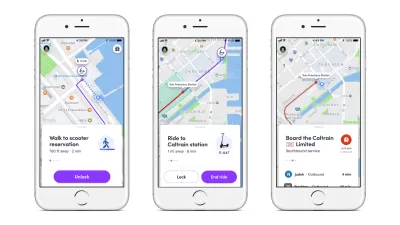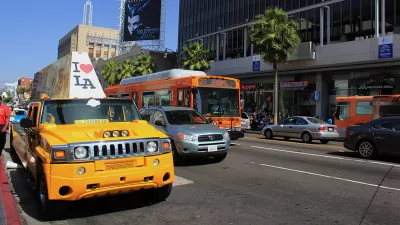With new transportation options coming to cities from a plethora of innovators and entrepreneurs, how will public transit agencies respond? Are these modes in competition, or does their widespread use actually benefit one another?
A recent VerdeXchange 2016 panel brought together the public and private sectors to hash out these complex questions. Santa Monica City Manager Rick Cole moderated a conversation among LADOT General Manager Seleta Reynolds, Lyft Transportation Policy Manager Emily Castor, Scoot founder Michael Keating, and Alta Motors CEO Marc Fenigstein.
Castor pointed out that for transportation network companies like Uber or Lyft, a strong public transit system is not a threat, but a boon to the bottom line.
"The more viable it is for people to live here without owning a car, the more likely it is that they’re going to use Lyft frequently in combination with transit and other modes," she explained. "We need to look at how we can create this robust ecosystem together."
The key, and sometimes sticking point, is "together." "How do you innovate inside a bureaucracy? How does government do startups?" Reynolds asked. "What is the most effective role for the public sector in the midst of all of this very welcome—and sometimes unwelcome—disruption?"
What works best for both the public and private sectors, the panelists agreed, is cooperatively fostering a multiplicity of options that "overlap but don’t fully substitute for one another." And it works for people: Options allow customization, which gives the efficient movement of people primacy over any particular type of vehicle.
That creates plenty of space in the market for sorely needed innovation.
One example is Scoot, an electric scooter-sharing service based in San Francisco and seeking to enter the L.A. market. "Our core rider is a transit rider who is sometimes in a hurry," founder Keating told the audience—only semi-joking.
No discussion of transportation innovation can avoid considering the coming of autonomous vehicles, of course. Also covered: the influence of transportation on public space, the place of bike-share in the transportation ecosystem, public-private partnership and co-branding services, equity in transportation planning, and more.
An edited transcript of VerdeXchange's panel "Disruption on Wheels: A New Mobility Model For Cities" is printed in The Planning Report.
FULL STORY: Public & Private Pros Opine on How 'Choice' Impacts Urban Transportation

Maui's Vacation Rental Debate Turns Ugly
Verbal attacks, misinformation campaigns and fistfights plague a high-stakes debate to convert thousands of vacation rentals into long-term housing.

Planetizen Federal Action Tracker
A weekly monitor of how Trump’s orders and actions are impacting planners and planning in America.

In Urban Planning, AI Prompting Could be the New Design Thinking
Creativity has long been key to great urban design. What if we see AI as our new creative partner?

King County Supportive Housing Program Offers Hope for Unhoused Residents
The county is taking a ‘Housing First’ approach that prioritizes getting people into housing, then offering wraparound supportive services.

Researchers Use AI to Get Clearer Picture of US Housing
Analysts are using artificial intelligence to supercharge their research by allowing them to comb through data faster. Though these AI tools can be error prone, they save time and housing researchers are optimistic about the future.

Making Shared Micromobility More Inclusive
Cities and shared mobility system operators can do more to include people with disabilities in planning and operations, per a new report.
Urban Design for Planners 1: Software Tools
This six-course series explores essential urban design concepts using open source software and equips planners with the tools they need to participate fully in the urban design process.
Planning for Universal Design
Learn the tools for implementing Universal Design in planning regulations.
planning NEXT
Appalachian Highlands Housing Partners
Mpact (founded as Rail~Volution)
City of Camden Redevelopment Agency
City of Astoria
City of Portland
City of Laramie





























